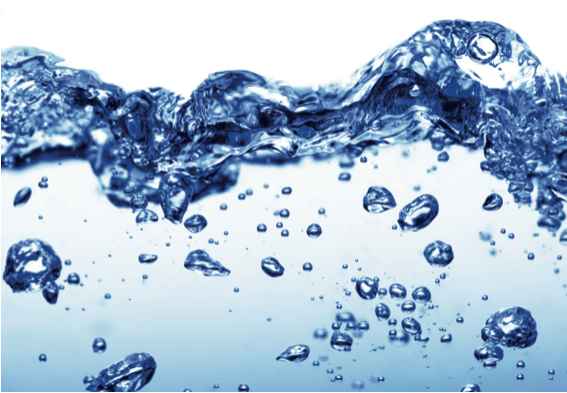Sommaire
- Vaccines & Endotoxin, a Challenging World.
- Méthode alternative d’identification. Exemple d’une implémentation d’un système Maldi Tof au laboratoire de contrôle.
- Implantation d’une méthode microbiologique alternative et polyvalente au laboratoire. Exemple du BACTALERT 3D®
- From Variable Operator Numeration To The Standardized 3P® Station Automated Colony Counting On Environmental Monitoring Culture Media Plate
- Analyse de la charge microbienne en temps réel pour prévenir les risques de contamination et mieux contrôler les procédés.
- ISO 22519 PW/WFI production systems standard: Quality aspects.
- Eau pour préparations injectables en vrac (productions, coûts). Étude de cas axée sur la qualité microbiologique.
- Coming to basics on rouging.
- Winning combination: Reducing particles in RTU packaging by aligning lid material, adhesive and sealing parameters in a holistic approach.
ISO 22519 PW/WFI production systems standard: Quality aspects.
Typical pharmaceutical quality teams that work with compliance to Good Manufacturing Practice (cGMP), are responsible for demonstrating control over all plant systems and processes.
This article will discuss the challenges that quality teams face while specifying new or upgraded water systems and the ways to handle them according to the ISO22519.

cGMP compliance of water systems is a continuous problem and the number of regulatory authorities’ observations and warning letters that pharmaceutical companies receive, due to wrong handling and controlling of water systems, indicates that the core problem is many times at the design stage of the water production systems.
1. Quality aspects of ISO22519 for water production systems
SO22519 for “Purified water and water for injection pretreatment and production systems” emphasizes the importance of designing a cGMP water production system holistically, from the raw water feed to the PW/WFI fill valve. The system must be designed for quality in a true Quality by Design (QbD) concept and as adopted by the FDA. For example, the ISO talks about a “build clean” concept, during the installation of PW/WFI Pretreatment and Production systems: supply of piping/tubing and equipment in clean condition and installation methods that prevent ingress of contaminants.
The ISO gives guidance on how to design, build and operate a water system that is simple environmentally friendly and cost effective. This will lead to minimum maintenance and to a reliable system that will meet all the pharmaceutical cGMP requirements. The following paragraphs review the quality aspects of the ISO22519.
1.1 Continues improvement in system parameters
The ISO based its policy of improvement on the European polices for high quality systems used for production of WFI with membranes as formulated in the “Questions and answers on production of water for injections by non-distillation methods – reverse osmosis and biofilms and control strategies1”. The document was written to provide clarification and guidance in relation to the use of reverse osmosis in the manufacture of Water for Injection and also to provide more detailed guidance on the control of Biofilms.
The emphasis on biofilm is because RO systems typically operate at ambient temperatures and as such offer an ideal environment for the development of a biofilm. Biofilms are notoriously difficult to remove so the main aim of any pretreatment and production system should be to forestall their formation.
The main parameters for improvement are: microbial count, conductivity and total organic carbon (TOC).
In 2008, the EMEA published a reflection paper on WFI prepared by reverse osmosis (RO). This publication stated that the major problem for production of WFI with RO is the microbiological aspect, and the “net effect is that the RO membrane will become, in practice, a bacterial fermenter”2. This was one of the leading considerations that delayed the change of the European Pharmacopeia from WFI production by distillation only to the additional option of using membranes.
This paper set the stage for dealing with the most challenging parameter in cold water systems: the microbial growth.
With this mode of thinking the ISO has formulated the “improvement principal” for both PW and WFI. As written in the ISO: “The PW/WFI Pretreatment and Production water quality shall show improvement in all quality parameters as the water advances through the system.” The ISO gives guidance as to what type of equipment, and in what configuration, can be installed to minimize the microbial growth. A big part of the solution is prevention and keeping tight control of the microbial parameters. The principal is to keep the in-system levels lower than the municipal feed levels. So the microbial total count at the RO feed should be <500 (cfu/ml); and after the RO should be <200 (cfu/ ml). The low level of RO feed is needed so as to stop the RO membranes becoming a biological hazard that could grow through the membrane and threaten the product quality.
1.2 Sanitization
Sanitization is a key component of microbial control. Sanitization with chemicals is time consuming, costly and hazardous. The chemical agent must be analyzed before use for efficacy and analysis of product must be done post sanitization to assure full removal of cleaning agent before return to operation. Even assuming automatic chemical sanitization, that minimizes the above drawbacks, the underlying challenge of chemical sanitization is the uncertainty of its effectiveness. Even relatively undeveloped biofilms can be a challenge to neutralize and remove by chemical agents. On the other hand, hot water sanitization is much more effective in penetrating biofilms even if the biofilm removal is only partial.
The thermal sanitization will give robustness to the production method and this is in line with the European policies3.
In this line, thermal sanitization is an ISO stipulated must.
1.3 Equipment
An exhaustive list of process equipment is given with pros and cons. Techniques such as raw water ultrafiltration, electrical scale control, water softening, carbon filters, UV dechlorination, filtration and degasification are all discussed. The systems with the organic medias (softeners, carbon filters) were not recommended as these collect contamination and are hotspots of bacterial proliferation.
1.4 Sampling
According to the standard, and common practice, every relevant unit should have a sample valve before and after the component. Such components will be those that could affect the microbial or chemical quality; the minimum sampling points and locations are listed in the standard.
Recommendations for areas to be microbiologically sampled can be found in the ISPE Good Practice Guide: Sampling for Pharmaceutical Water, Steam and Process Gases4. Points to be concentrated on: deionization steps, carbon filters, depth filters, Reverse Osmosis (RO), Ultrafiltration (UF) and the final deionization process.
These recommendations were embraced in the ISO standard.
The standard goes into proper installation details of the sample valves and its environs. The valves must be zero dead leg valves throughout the system so as to minimize false positives, the valves should be mounted on short outlet tees above drainage points. In addition, operator comfort is important as this is a factor in keeping the samples clean, so clearance of the sample bottle between the valve and the drain is stipulated.
1.5 Documentation
The standard lists the minimum needed documentation: URS, SOP’s, Design Qualification (DQ), Installation Qualification (IQ), Operational Qualification (OQ) and Performance Qualification (PQ) protocols.
An exhaustive list of recommended engineering documentation is listed. The list includes: user guide, software documentation, electrical drawings, mechanical documentation, instrumentation certifications, spare parts list and more. Signage is also stipulated and detailed.
1.6 Specific Good Manufacturing Practice (GMP) requirements
The goal of this clause is to describe the Specific Good Manufacturing Practice (GMP) requirements that are relevant to PW and WFI production systems.
The standard refers to the following requirements:
• Physical breaks of at least 50 mm shall be provided at all drain lines.
• No piping bypass on filters.
• Separation between systems to prevent cross-contamination.
• System monitoring and recording with alert/action limits.
The goal of this clause is to describe the Specific Good Manufacturing Practice (GMP) requirements that are relevant to PW and WFI production systems.
The standard refers to the following requirements:
• Physical breaks of at least 50 mm shall be provided at all drain lines.
• No piping bypass on filters.
• Separation between systems to prevent cross-contamination.
• System monitoring and recording with alert/action limits.
1.7 Control philosophy and Alarms
The ISO standard dedicates two clauses for control and alarms systems. The control clause describes the “Minimum control loops needed for installation”, and the alarm clause describes the required and recommended alarms.
2. Conclusion
The ISO 22519 is not only a standard for engineers and maintenance personnel but also for QA/QC as quality was a leading consideration in the composition of the standard.
While planning a new or upgrading a PW/WFI water system it is important to engage the concerned teams, especially quality teams, to make sure they are involved in the critical decisions, even if the interests of those conflict with the engineering teams . It is important to solve the problems at the design stage. Having the design stage under the sole ownership of the engineering team is not the best way to head off possible quality issues. The new ISO 22519 standard will help those teams to make the right choices and will direct them through the right way to achieve a reliable and safe system that eventually will meet all microbial, chemical and physical criteria.
Partager l’article

Keren ZALKIND ZIGELBOIM – Biopuremax
s. Keren Z. Zigelboim is Head of Business development at Biopuremax, with BSc in Chemical Engineering from Technicon- Israel Institute of Technology. A leading member of ISO 22519 standard committee for purified water (PW) and water for injection (WFI) Pretreatment and production systems. Keren leads the quality processes in Biopuremax: CE mark, ISO13485 medical device and ISO 9001. Keren Z. Zigelboim has extensive experience in validation. This includes: pharmaceutical water systems, HVAC, aseptic processes and industrial utilities.
kerenz@biopuremax.com

Shlomo SACKSTEIN – Biopuremax
Mr. Shlomo Sackstein is Chief Executive Officer at Biopuremax and the Biopuremax patent holder, with
a BSc in Mechanical Engineering from Technion –
Israel Institute of Technology and an MBA in Business Administration from Tel Aviv University.
Shlomo has been designing, installing, validating and operating high purity water systems for 20 years in the Biopharma industry all over the world. The author of many publications in internationally : Pharmaceutical Engineering, Pharmind, Technopharm, PDA Letter, Cleanroom Technology Magazine and more and took a lead part in writing the latest update in the ISPE Baseline, Volume 4: Water and Steam.
Shlomo Sackstein is a member of ISPE. In addition Shlomo is an active member of the executive board of the Israel PDA chapter. Presently the chairman of the ISO standards committee TC282 / WG 3 Purified water (PW) and water for injection (WFI) pretreatment and production systems
shlomo@biopuremax.com
Références
[1] EMA, “Questions and answers on production of water for injections by non-distillation methods – reverse osmosis and biofilms and control strategies”, EMA/INS/GMP/443117/2017, GMP/GDP Inspectors Working Group.
[2] EMEA, “Reflection Paper on Water for Injection Prepared by Reverse Osmosis”, March 2008
[3] Press Release, 154th Session held in Strasbourg, France, European Pharmacopoeia Commission adopts
revised monograph on Water for Injections allowing production by non-distillation technologies, March 2016
[4] ISPE Good Practice Guide: Sampling for Pharmaceutical Water, Steam and Process Gases, 2.3.5.6 Performance Qualification Sampling, Table 2.2, ISPE 2016.
[5] PDA, Technical Report #69: “Bioburden and Biofilm Management in Pharmaceutical Manufacturing Operations”, Paragraph 6.2.1.4, 2015


